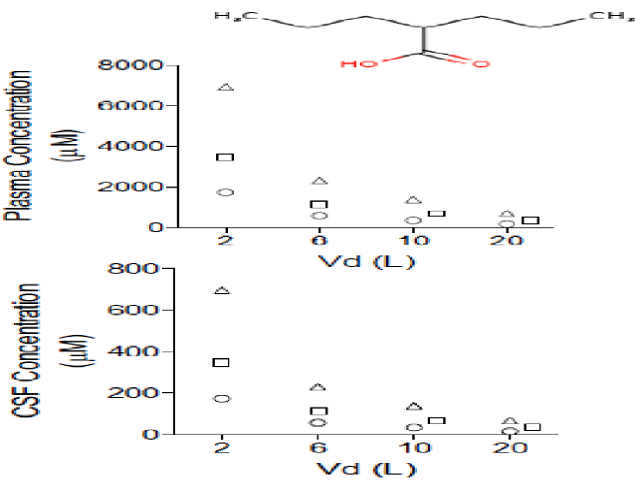PTPRC, KDM5C, GABBR1 and HDAC1 are the Major Targets of Valproic Acid in Regulation of its Anticonvulsant Pharmacological Effects
DOI:
https://doi.org/10.5530/bems.8.2.7Keywords:
Anticonvulsant therapeutics, Bipolar disease, Seizures, Epilepsy, Valproate.Abstract
Background: Valproic acid (VPA) is a small molecule which is the 3rd most prescribed drug among anticonvulsant therapeutics. Understanding of the pharmacology of VPA targets will help optimally rationalise the therapeutic effects and also minimise the undesired outcomes. Hence this study analysed the human specific targets of VPA and assessed the affinity of VPA to these targets to interpret potential safe therapeutic range for VPA. Materials and Methods: The targets of VPA were identified from the SwissTargetPrediction server and STITCH database and analysed for their affinity with VPA using Autodock vina 1.2.0. The volume of distribution (Vd, L) and the dose of VPA reported in the DrugBank database was used for estimation of the plasma and CSF concentration. The plasma and CSF Concentration Affinity (CA) ratio of VPA against each of the high affinity targets was assessed at variable Vd (0.1 to 0.4 L/kg) to identify the therapeutic safety window of VPA. Results: The plasma/CSF concentration of VPA range from 170 to 7000 μM and 17 to 700 μM respectively. The plasma concentration achieved was within the safety limits (170 to 700 μM) at higher Vd (>10 L), while at lower Vd (<10L), the plasma or CSF concentration achieved was of concern at VPA dose of >1000 mg/day. The plasma concentration at very low Vd (< 2L) was of concern even at dose of 500 mg/day. The affinity of VPA against all its human specific targets ranged from 2.9 to 52.1 mM. The CA ratio of VPA against its high affinity target was observed to be greater than 0.8, indicating potentially significant modulation of these targets. The following four targets showed CA ratio of over 1: PTPRC, KDM5C, GABBR1 and HDAC1, indicating their preferential targeting by VPA. CES1 and SLC22A12 are high affinity targets of VPA which can contribute to its undesired pharmacological effects (CNS oedema and hepatotoxicity). Conclusion: This study offers a novel insight into the anticonvulsant and undesired pharmacology of VPA by specifically identifying the targets involved and recommends an evidence-based approach to personalise dose titration of VPA to achieve optimal therapeutic benefits.

Downloads
Published
How to Cite
Issue
Section
License
Copyright (c) 2022 Biology, Engineering, Medicine and Science Reports

This work is licensed under a Creative Commons Attribution-NonCommercial-NoDerivatives 4.0 International License.









